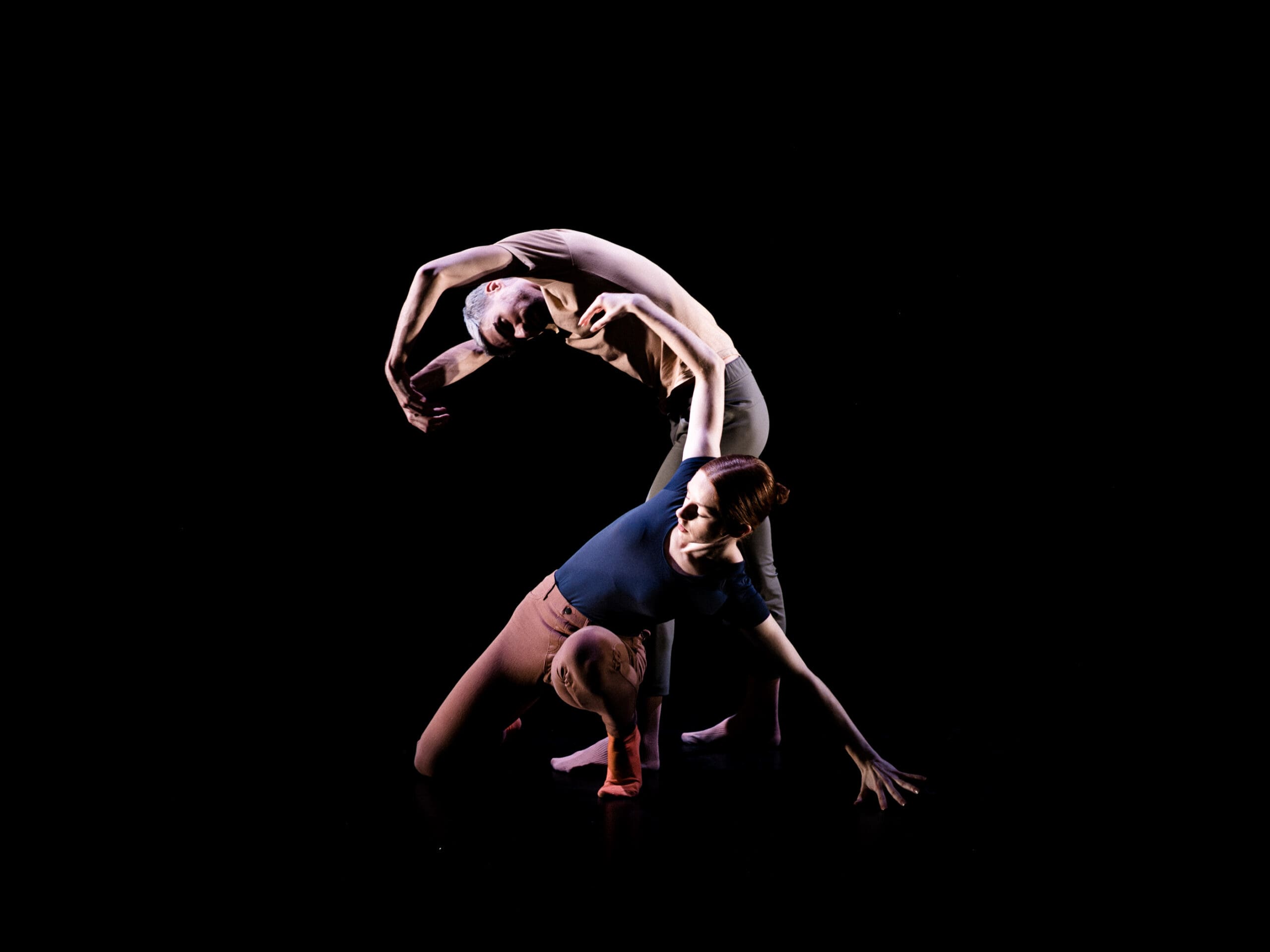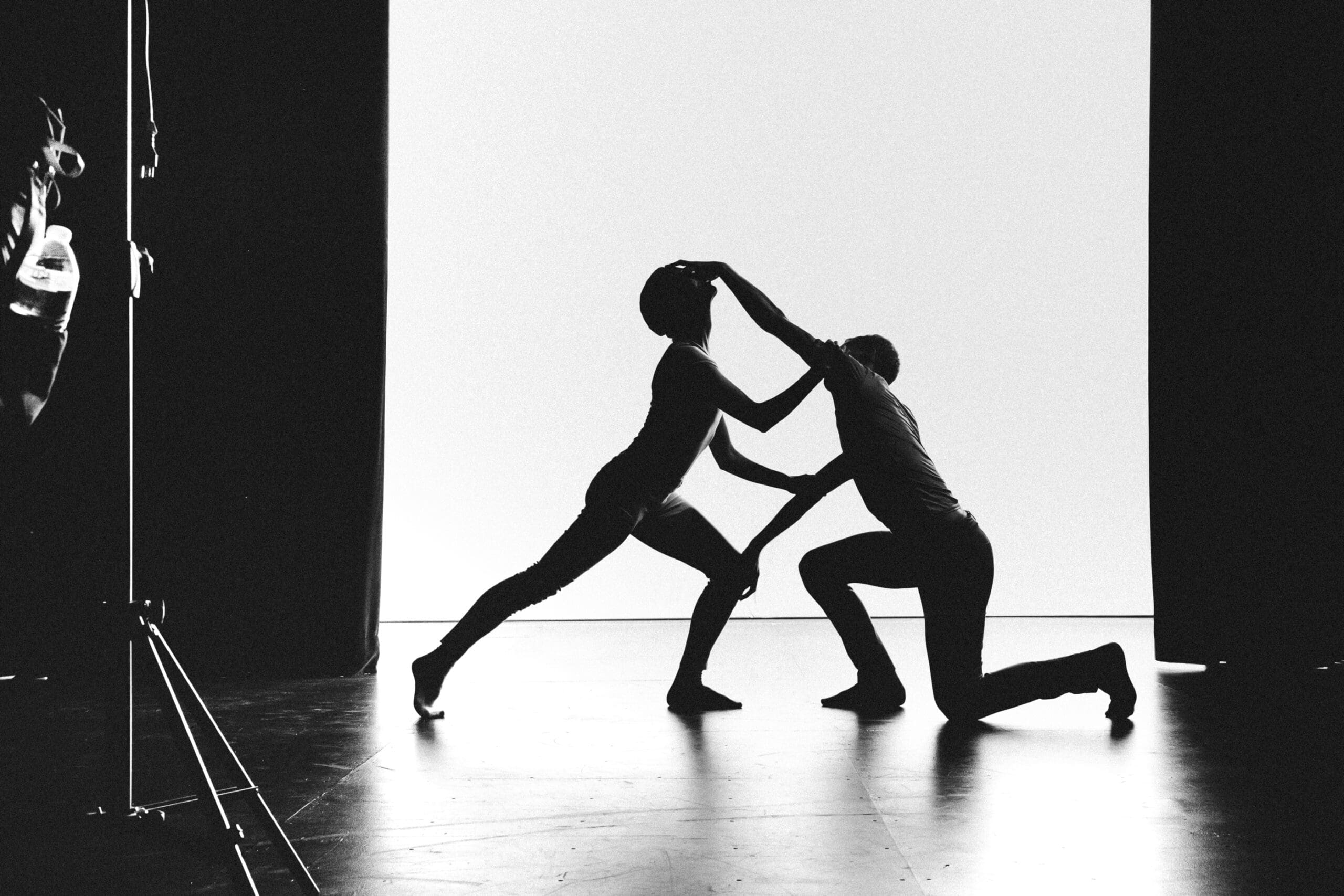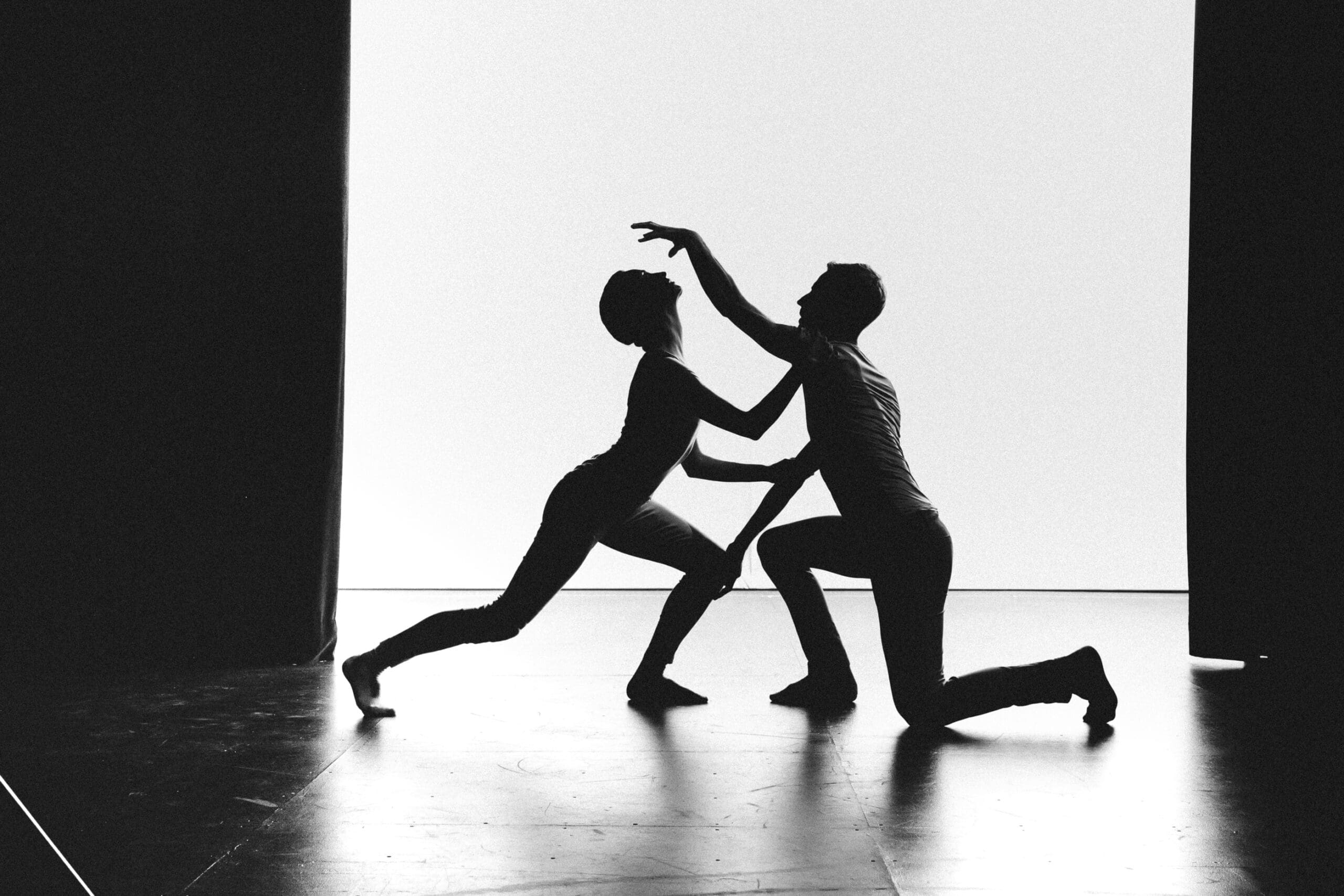
James Budinich, Ph.D. candidate in Music Composition, and his collaborator Gabrielle Lamb, director of Pigeonwing Dance, began their artistic partnership during the 2018 Next Festival Composer / Choreographer Workshop. Budinich and Lamb will discuss their evening-length piece, Plexus: a work in knots, and nurturing their collaboration across a distance, as part of Next Fest Connects, an initiative from the Next Festival of Emerging Artists to support artists during difficult times. Register for the free event, hosted on Zoom on Thu, Apr 30 at 4pm.
In advance of his Next Fest Connects artist talk, Budinich adds his reflection to the “Arts and Artists Are Essential” collection.
In our morning discussions during the Next Festival, we talked about shapes to improvise around, peculiar animal movements to borrow, and action verbs eliciting concrete ideas (slice, encircle, dig, sever…). In our afternoon sessions in the dance studio, we brought these ideas to life. I worked with the six musicians in the ensemble to explore sonic possibilities echoing these curious images while my collaborator, Gabrielle Lamb, prepared the dancers, discussing the embodied versions of these ideas. When we brought the two halves together, one side of the partnership amplified the other, crafting a unified new world in the moment.
The two-year collaboration between Gabrielle and I culminated in the premiere of our evening-length work, Plexus: a work in knots, in New York City this past February. With me living in Durham and Gabrielle in New York City, we built our collaboration from a distance, using technology to our benefit. Those early workshops established our collaborative partnership that flourished as we continued to virtually exchange ideas and develop our work into a new piece.

I composed Plexus in a digital audio software called Ableton Live. The music is entirely electronic, consisting of new digital sounds and instruments. Similar to how we created new work out of animal movements and verbs, I used ordinary materials to create those new instruments—tiles and metal pipes now resembled organs and broken glass. The spirit of these instruments recalled our first experiments in the dance studio, discovering new parallels to found objects and ideas.
Our process began with discussing aesthetic ideals and narrative direction. I composed fifteen minutes of music on those themes, then sent the sketches to Gabrielle who workshopped them with her dancers in New York. Each day as the dancers played with the sketches, I’d receive new videos showing patterns of movement, improvisations centered around specific appendages, and group work of multiple dancers interacting to the sounds. This new dimension to my music revealed new possibilities; when I returned to Ableton to build on the sketches I took the dancers’ movement into account. Seeing a moment of physical touch between two dancers that broke a kind of invisible force field sparked new pathways for the music. I took that idea of touch between two opposing forces and built new rhythmic patterns and sounds that emerged through the collision of two ideas.
I couldn’t have created this score without my community, both local and global. The found objects that I made into instruments came from Durham’s Scrap Exchange; Gabrielle and the Pigeonwing dancers helped me find new methods of developing my musical ideas in ways that echoed their movements. This wouldn’t have been possible without virtually sharing and building on our sketches. While we might feel cut off from our communities in this time, we can still find ways to connect through technological means and continue to support each other in whatever capacity possible.
“How can we unite our local and global communities in our creative work?”
—James Budinich
Just as my collaboration with Gabrielle used technology to connect us, as artists we can take this time to build relationships with friends and colleagues who are farther away through the same means. Under our stay-at-home orders, distance is now equalized for everyone; the Venn diagram outlining our local and global communities might now be represented by two overlapping circles. How can we unite the two in our creative work?




“My creative output has slowed almost to a halt over the last month as I’ve tried to make sense of everything, and that’s okay.”
I’ve been spending more and more time since the pandemic emerged doing this—reflecting. I’ve grieved the total upheaval of my professional and personal lives along with the loss of commissions and concerts. My creative output has slowed almost to a halt over the last month as I’ve tried to make sense of everything, and that’s okay. I’m grateful for the support I have and am using this moment to think of how I can give back to those who have helped me along the way. Seeing colleagues channel their energy into new artwork has been inspiring; in our talk on Thursday, Gabrielle and I will share the strategies that worked for us, strategies that can benefit all artists in our post-COVID reality.


